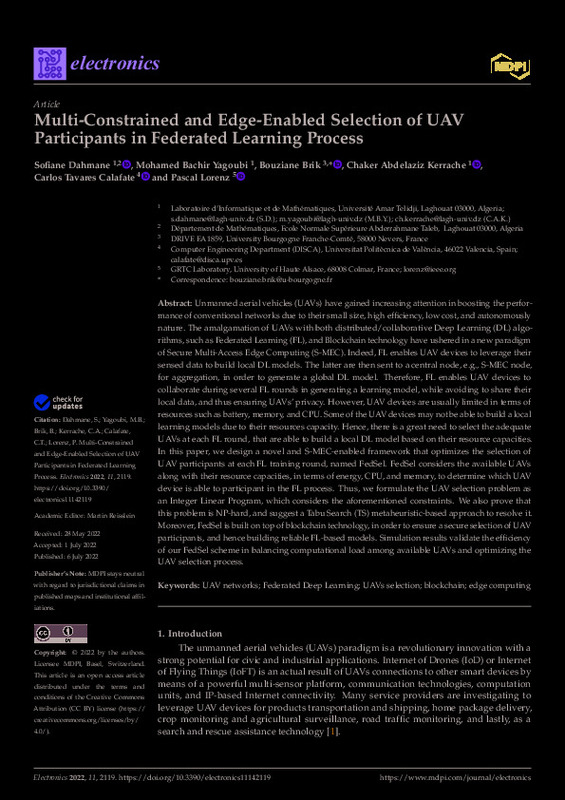JavaScript is disabled for your browser. Some features of this site may not work without it.
Buscar en RiuNet
Listar
Mi cuenta
Estadísticas
Ayuda RiuNet
Admin. UPV
Multi-Constrained and Edge-Enabled Selection of UAV Participants in Federated Learning Process
Mostrar el registro completo del ítem
Dahmane, S.; Yagoubi, MB.; Brik, B.; Kerrache, CA.; Tavares De Araujo Cesariny Calafate, CM.; Lorenz, P. (2022). Multi-Constrained and Edge-Enabled Selection of UAV Participants in Federated Learning Process. Electronics. 11(14):1-14. https://doi.org/10.3390/electronics11142119
Por favor, use este identificador para citar o enlazar este ítem: http://hdl.handle.net/10251/193215
Ficheros en el ítem
Metadatos del ítem
| Título: | Multi-Constrained and Edge-Enabled Selection of UAV Participants in Federated Learning Process | |
| Autor: | Dahmane, Sofiane Yagoubi, Mohamed Bachir Brik, Bouziane Kerrache, Chaker Abdelaziz Lorenz, Pascal | |
| Entidad UPV: |
|
|
| Fecha difusión: |
|
|
| Resumen: |
[EN] Unmanned aerial vehicles (UAVs) have gained increasing attention in boosting the performance of conventional networks due to their small size, high efficiency, low cost, and autonomously nature. The amalgamation of ...[+]
|
|
| Palabras clave: |
|
|
| Derechos de uso: | Reconocimiento (by) | |
| Fuente: |
|
|
| DOI: |
|
|
| Editorial: |
|
|
| Versión del editor: | https://doi.org/10.3390/electronics11142119 | |
| Código del Proyecto: |
|
|
| Agradecimientos: |
|
|
| Tipo: |
|









